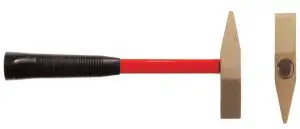Table of Contents
INTRODUCTION
There is a vast range of hammers available, with different shapes, sizes and various weight. As one of the oldest tools, the hammer has continued evolving with a variety of functions. It has different styles that have other uses.
Although some types of hammers are very specialized and are capable of performing tasks formally performed by axes, the parts of a hammer are typically divided into three main parts. The head which is used to hit objects with, the alternate hammerhead is designed to pull out nails from materials, and it’s known as the claw, and it serves as the fulcrum on a claw hammer. The last main component of a hammer is the handle; it is to be held to provide more precision. There are different types of hammers used for various purposes. Most hammers are designed based on their function and must be used carefully. In this article, you’ll find out about some of the different types of hammers you can find. You can also learn more about hammers and how they’re made here how are hammers made.
TYPES OF HAMMER
CLAW HAMMER
These hammers are quite common and owned by a lot of people, including the professionals and people who have it at home for some DIY use. It is indeed an essential addition to your toolbox an even home workshop. A full set of these hammers will help you complete almost any task. It is designed with a metalhead and a curved claw that is used to retract nails from some materials like wood.
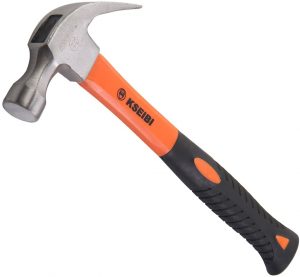
SLEDGEHAMMER
A sledgehammer has an extra-long handle and a metalhead that delivers very hefty blows. You’ll most likely find this hammer at a construction site as it is, mainly used for demolition tasks to break through concrete and even through the ground. It is not likely to be found in the household.
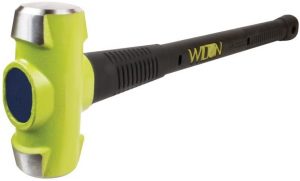
CLUB HAMMER
A club hammer, also known as a Lump hammer, is a double-faced hammer. It is a smaller size of a sledgehammer and is used for some light demolition work.
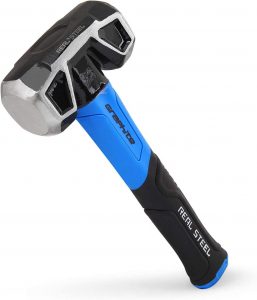
RIP HAMMER
This hammer can be identified as the claw hammer’s brother in the sense that it is often used by professionals to rip or tear apart material and even dig holes due to their heavyweight, but in this case, their claws are straight and not curved as opposed to the claw hammer.
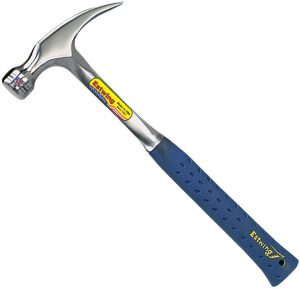
ELECTRICIANS HAMMER
This hammer has a similar design to a claw hammer. It has a fiberglass handle for efficient shockproof. The claw is angled differently, and the steelhead is capable of withstanding great impact force.
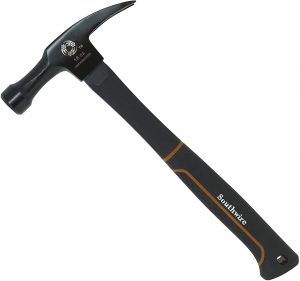
SPLITTING MAUL HAMMER
Just as the name implies, this splitting maul hammer is designed in a half sledgehammer, half axe manner. It features a long handle, sharp axe head and a sledgehammer. It is used to split wood and gives excellent results.
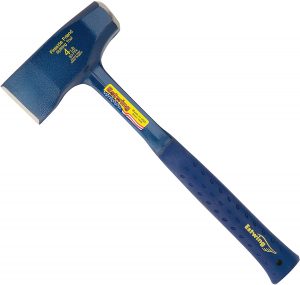
LATH HAMMER
A Lath hammer is designed with an axe head that features an inbuilt notch which is used to retract nails, and a hammerhead that can strike whack nails into wood. It is used to shape and trim the slim lumber that makes up the foundation of a plaster wall.
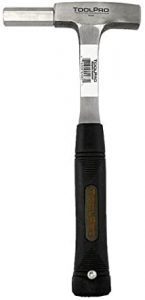
HATCHET HAMMER
This hammer features two functions, half hammer, half hatchet. A hatchet hammer has a regular hammerhead on one side and an axe head on the other side. It is used to carry out a variety of jobs but mostly for survival and emergencies.
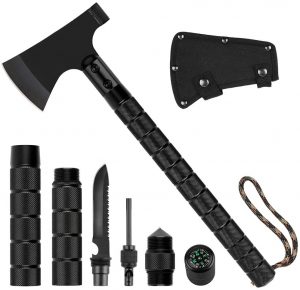
TITANIUM HAMMER
A titanium hammer is unique because of its efficient energy transfer. A regular steel hammer transfers about 70% of their power to the nail, but a titanium hammer delivers up to 97%. The result of a titanium hammer is more efficiently driven.
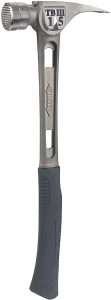
DRYWALL HAMMER
The head of a drywall hammer is designed with a serrated feature that is used to hammer nails into drywall without destroying the surrounding area. The other end of this hammer is used to cut into the drywall and is also used to pull out nails.
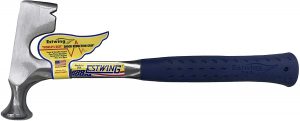
SCUTCH HAMMER
It is mainly used and found at construction sites or industries. It is used to chisel bricks and also used to remove scutch. Each hammerhead features one or two grooves that allow for the addition of a cutting attachment.
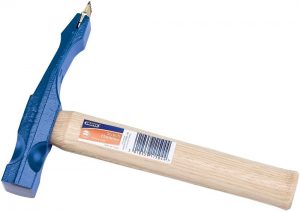
CHASING HAMMER
This is a unique hammer. It is designed with a slim handle at the hammer’s rear that thickens as it proceeds down to improve balance when in use. The head is large and used to flatten metal, and the ball peen side creates the ability to stay still, this makes these hammers the go-to when dealing with metal and even in shaping jewelry.
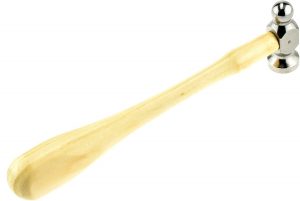
CROSS PEEN HAMMER
This hammer has a standard hammerhead as well as a wedge-shaped peen. It is mainly used by blacksmiths; these hammers are good at drawing out the metal. It also reduces the risk of hitting your hand.
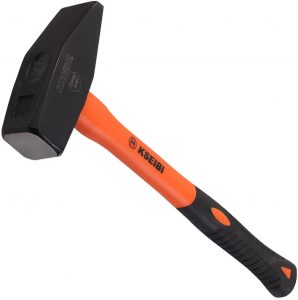
ROCK HAMMER
This hammer is used in excavation and to break small rock apart. It also has a chisel end that’s great for digging holes. It is also known as a Pick hammer.
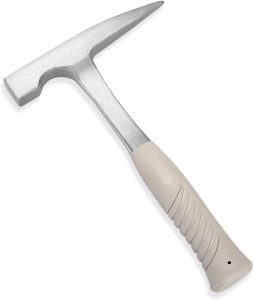
TINNER’S HAMMER
This hammer is designed to create rolled seams and edges in tin metals and other soft metals. It features a square head that helps to avoid marring the metal while riveting. Its cross-peen end is used for pinning down a rivet when it cannot be used.
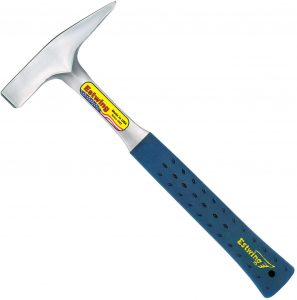
TOOLMAKERS HAMMER
This is a unique hammer. Its distinctive feature is that it’s designed with an inbuilt magnifying glass that is positioned directly at the center, between the ball peen and the hammering face
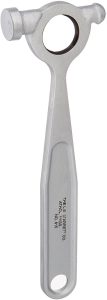
BRASS HAMMER
This hammer is designed with a cylinder-shaped brass head, and it is used for driving steel pins into different types of materials without destroying them in the process. It is mainly used in the automotive industries.
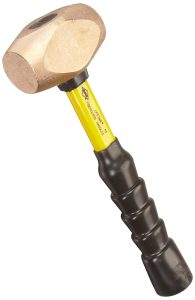
MECHANIC’S HAMMER
It is also referred to as a body mechanic’s hammer. This hammer has a long pein tipped with a conical die and a flat head. It can be used with a curved type of anvil to remove dents from car panels.
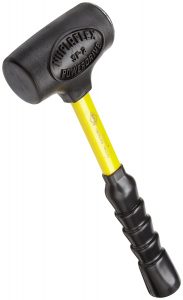
SCALING HAMMER
It is designed with a vertical chisel and pick. This hammer is used to remove scale, rust and different types of hard coating from other surfaces. It ranges from single-headed to triple-headed functions and models and also functions like a jackhammer.
SAFETY MEASURES TO TAKE WHEN USING A HAMMER
- Make sure to always use the right hammer for the job
- Do not hit nails with the side of a hammerhead, the metal on the check side is not hardened and could be damaged
- If your hammer slips off nails, roughen the face of the head with a medium abrasive paper
- If you timber handle is becoming loose, place the head in water overnight so as to expand and tighten the head
- Always ensure you wear safety glasses when breaking concrete or driving masonry nails.
- Always check where the handle is held in the hammerhead regularly to ensure the wedges are tight as timber tends to shrink in dry conditions.
CONCLUSION
A hammer is one of the most utilized tools that has been in existence for the longest. It has multiple types, uses and functions. Every kind of hammers as vast as they are, have different services and procedures, but one of the significant benefits of a hammer is to whack objects to shape, digging, breaking concrete and so on.

